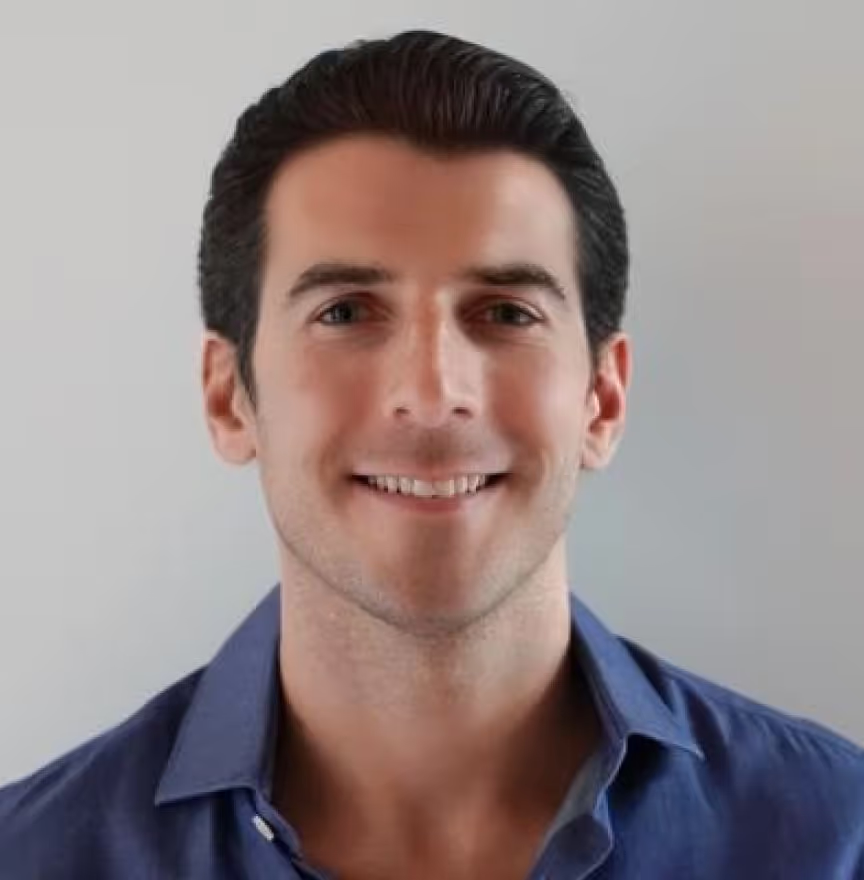A 2 minute assessment to get a personalized mental health or alcohol recovery plan.
Dry January has become more than one-month challenge. It's now a pattern interrupt that can reset your habits, improve your health, and create momentum for drinking less all year.
What You'll Discover:
- What science shows actually improves after 31 alcohol-free days
- A week-by-week behavioral plan that sticks
- Critical safety information before you start
- How to handle social pressure and cravings
- Advanced tactics for common hurdles
- How to turn January's gains into lasting change
Most Dry January guides recycle the same basic tips: tell your friends, swap in mocktails, track your drinks. That's useful, but incomplete. The first thing to know is this: Dry January works best when you treat it as a behavior change project backed by science, not just a test of willpower.
This playbook adds what popular content usually skips—clinical safety context, what research specifically shows improves after 31 days, a week-by-week behavioral plan based on habit formation principles, and how to translate a one-month sprint into lasting change throughout the year.
Why Dry January Matters
Alcohol remains a major driver of preventable death and disease globally. In 2024, the World Health Organization estimated 2.6 million deaths per year are attributable to alcohol—roughly 4.7% of all deaths worldwide. The burden falls disproportionately on men and is dominated by noncommunicable diseases like cardiovascular disease and cancer.
In the United States, the trend has worsened significantly. Between 2012 and 2022, alcohol-related deaths rose about 70%, reaching 51,191 deaths in 2022. This isn't a niche problem—it touches families, workplaces, and communities at scale.
Dry January is what researchers call a "temporary abstinence challenge"—a short, time-boxed pause that lets your body recover, your habits reset, and your mind collect data on what alcohol has been doing in the background. Done thoughtfully and safely, a month off can become the wedge that nudges your drinking patterns down for the entire year.
What Science Shows About a Month Alcohol-Free
A growing body of research has examined both the short-term physiological changes during a month of abstinence and the longer-term behavioral effects that follow.
Short-Term Physiological Improvements
A prospective study published in BMJ Open found that insulin resistance, blood pressure, weight, and cancer-related growth factors all improved after a month of abstinence in moderate-to-heavy drinkers compared with a control group who continued drinking. This is one of the most frequently cited studies in Dry January discussions because it measured actual biomarkers, not just self-reported feelings.
Public health organizations echo these findings: blood pressure, resting heart rate, insulin resistance, and cholesterol often improve after four weeks without alcohol.
Behavior Change Beyond January
In a feasibility randomized study of temporary abstinence campaigns, participants who took a month off saw enduring reductions in alcohol consumption compared with controls. This is evidence that these challenges can be behavioral springboards, not just one-month stunts.
Reviews of temporary abstinence challenges report perceived gains in sleep quality, energy levels, mental well-being, and self-efficacy—the belief that you can actually change your drinking. This last one is an underappreciated driver of long-term outcomes.
What's Still Uncertain
Not every outcome improves for every person, and people with dependence or heavy daily intake can face dangerous withdrawal if they stop abruptly—more on safety below. The durability of physiological changes also varies with how you drink after January. The month opens the door, but your February plan determines whether you walk through it.
Safety First: Who Should NOT Stop Abruptly
If you've been drinking heavily every day or near-daily—for example, six to eight or more standard drinks per day, or morning drinking—do not stop abruptly without talking to a clinician. Alcohol withdrawal can be serious, including tremors, anxiety, sweating, insomnia, elevated blood pressure and heart rate, and in severe cases seizures or delirium tremens, which is a medical emergency.
A medical team can safely taper you off, prescribe medications to prevent complications, and monitor your vital signs and electrolyte levels.
For everyone else, it's still wise to screen your risk before starting:
Have you experienced withdrawal symptoms when you've paused drinking before? Do you have medical conditions like uncontrolled high blood pressure, or take medications that might interact with sudden abstinence? If you're pregnant, abstinence is recommended, but if stopping causes severe symptoms, reach out to your healthcare provider immediately.
All that said, for light-to-moderate drinkers, Dry January is safe and likely beneficial for sleep, recovery, and metabolic health.
The 31-Day Dry January Plan
The goal isn't to white-knuckle through a month. It's to redesign the environment and habits that keep alcohol on autopilot, so you exit January with momentum rather than just relief that it's over.
Before Day 1: Set Up for Success
Define your "why" in one sentence. For example: "I'm pressing pause to improve my sleep and blood pressure, and to see how much better my mornings can feel." People who explicitly articulate their why and track benefits tend to sustain change better.
Audit your triggers. Identify when, where, and with whom you drink most. Label obvious cues like evenings at home, Friday work gatherings, or cooking dinner, and pre-plan replacements for each.
Stock satisfying alternatives—not just water. Think bitter, sour, complex drinks: non-alcoholic beers and spirits, shrubs, sodas with bitters, tea rituals, sparkling water with citrus and salt. For recipe inspiration, check out our guide to non-alcoholic cocktails and mocktails.
Tell your people. Declare your plan to family and friends, and invite one ally to join you. Social proof and accountability both matter significantly in behavior change.
Create a 60-second "no thanks" script. A polite, pre-rehearsed refusal lowers awkwardness and reduces unplanned drinking. Yes, the NIH literally recommends this practice.
Set up metrics to track weekly: sleep quality (0-10 scale), energy and mood (0-10), resting heart rate or blood pressure if you have a monitor, cravings (0-10), and which non-alcoholic drinks you enjoyed. The act of tracking reinforces behavior change.
Week 1: Interrupt the Evening Habit Loop
Plan "closing rituals" for the 5-8 p.m. danger zone. Replace the automatic drink with a stack of activities: brief walk, shower, non-alcoholic beverage in a proper glass, five-minute tidy, then a show or game.
Eat earlier in the evening. Low blood sugar fuels urges to drink. Front-load protein and fiber at dinner.
Celebrate micro-wins. Mark each "first"—first Friday, first dinner out, first stressful day—that you handle alcohol-free. Tiny rewards train your brain.
Week 2: Design Your Social Playbook
Own the first ten minutes at social events. Get a non-alcoholic drink immediately, scan for supportive allies, and say your "no thanks" out loud once. After that, most people stop offering.
Give yourself permission to leave early or arrive late—both are allowed. You don't owe anyone your entire evening.
Move the venue when possible. Suggest breakfast meetings, coffee walks, or hikes instead of happy hours or bar gatherings.
Week 3: Upgrade Sleep and Recovery
The third week is when many people report deeper sleep and better mornings—and when complacency can creep in. Double down on sleep hygiene:
Guard your bedtime. Go to bed at the same time every night, even weekends. Set a caffeine curfew for no later than 2 p.m. Get light and movement within an hour of waking.
Continue eating protein-forward dinners to prevent late-night cravings and blood sugar crashes.
Week 4: Plan Your February
People who plan what comes after January are significantly less likely to rebound. Your choices:
Keep going with Dry 90 if you're feeling great. Try intermittent sobriety—alcohol-free weekdays or every other week. Practice mindful drinking with deliberate limits and rules, like only Saturdays with a two-drink maximum.
If moderation fails repeatedly or cravings feel sticky, consider a conversation with a clinician about medication-assisted support like naltrexone.
What Changes Can You Expect by Day 31?
While everyone's physiology is different, these patterns align with research and common participant reports:
Sleep: Fewer nighttime awakenings, more restorative sleep stages, better next-day alertness. Often noticeable by week two.
Energy and mood: Morning clarity improves as sleep normalizes. Anxiety often decreases as weekend binges disappear.
Vital signs and lab values: Blood pressure and resting heart rate can begin declining within four weeks. Insulin resistance and lipid profiles may improve, especially if your baseline alcohol intake was moderate-to-high.
Weight: Some people see gradual weight loss due to fewer liquid calories and better sleep-driven appetite control.
Self-efficacy: The belief that "I can change this" is one of the most durable benefits and predicts lower drinking beyond January.
Remember, these are averages—not guarantees—and are more likely if your post-January plan prevents an "I earned it" rebound.
Advanced Tactics for Common Hurdles
"I miss the ritual."
Steal the glass-ice-garnish aesthetic. Complex non-alcoholic options that are bitter, tannic, or spicy scratch the same sensory itch as alcohol. Build a three-drink rotation you actually love to prevent boredom.
"My friends keep pushing me to just have one."
Name your why and your boundary in one clear sentence: "I'm running a 31-day sleep and blood pressure reset, so I'm skipping alcohol this month. Happy to grab a seltzer with lime though."
"Stress after work is my trigger."
Replace the 6 p.m. pour with a 15-minute stress circuit: brisk eight-minute walk, two minutes of box breathing, hot shower, non-alcoholic drink. Repeat daily for seven days. Habits wire fast when friction is low and the reward is immediate.
"Cravings spike on weekends."
Front-load novelty on Saturday afternoon—visit a new park, try a new recipe. Your brain loves novelty as much as it loves alcohol cues. Pair it with a firm lights-out time, because sleep debt amplifies urges.
"I broke my streak. Now what?"
Reset the same day. Don't turn one slip into a lost week. Research on behavior change consistently finds that rapid recovery matters far more than perfection.
Turning a 31-Day Sprint Into Year-Round Change
Dry January is a pattern interrupt. To keep the gains:
Codify your new default week. Write down your alcohol-free routine explicitly. For example: weekdays dry, one social slot on Saturday capped at two drinks, Sunday zero. Defaults reduce decision fatigue.
Track weekly, not daily. Weekly drink caps like four or fewer standard drinks buffer single-day variation and feel less restrictive than daily tracking.
Use situational rules, not willpower. Examples: no alcohol at home, only drink with food, never drink when stressed or under-slept. These create automatic boundaries.
Stack non-alcohol rewards. Celebrate fitness milestones, upgrade your coffee setup, plan a weekend day trip. Give yourself tangible wins that aren't drinking-related.
If you repeatedly overshoot your limits, consider medication-assisted support. Naltrexone is first-line and can reduce both cravings and the rewarding pull of alcohol. Discuss with a clinician if this might fit your goals later in the year.
Common Questions About Dry January
Will a single "cheat day" erase my progress?
No. Physiological benefits accumulate over weeks, and one slip doesn't reset them to zero. What matters is getting back on plan immediately the next day.
Is Dry January safe if I'm a light or occasional drinker?
Yes—safe and likely beneficial for sleep and recovery. If you're a daily heavy drinker, seek medical guidance before stopping abruptly due to withdrawal risk.
How much improvement can I expect in blood pressure or insulin resistance?
Effect sizes vary widely by baseline intake and health status, but the BMJ Open study detected meaningful improvements after just four weeks among moderate-to-heavy drinkers compared to controls.
Can a month really change my long-term drinking?
Yes, especially if you plan February intentionally. Trials of temporary abstinence show enduring reductions in consumption for participants who engage with the challenge versus controls.
Is there a public health case for doing this at scale?
Given 2024 WHO data showing millions of deaths globally, even modest sustained reductions in average drinking would have significant population-level benefits.
Your Week-by-Week Checklist
Week 0 (Prep):
- Write your one-sentence why
- Tell one ally and invite them to join
- Stock three non-alcoholic drinks you actually like
- Set up tracking for sleep, energy, cravings, and vitals
- Plan five post-work closing rituals
Week 1:
- Execute walk-shower-NA drink stack at 6 p.m.
- Eat earlier with protein-forward dinners
- Celebrate your first alcohol-free Friday
Week 2:
- Practice your "no thanks" script out loud once
- Control the first ten minutes at social events
- Move at least one social plan to a non-drinking venue
Week 3:
- Keep bedtime within 30 minutes daily
- Cut caffeine by 2 p.m.
- Get morning light and movement
Week 4:
- Choose your February default: continue, intermittent sobriety, or mindful drinking
- Write three situational rules
- Book a small health reward
If January Opens a Door, We Can Help You Walk Through It
A month off can be the perfect diagnostic: better sleep, steadier mood, calmer mornings, healthier vital signs. If you finish Dry January and decide you want lasting moderation or abstinence, the most evidence-backed medical support for reducing alcohol cravings is naltrexone—safe, non-addictive, and effective for many people.
Choose Your Horizon offers 100% virtual naltrexone care with physician oversight, coaching, weekly support groups, and discreet at-home delivery. If you're curious whether this could fit your goals after Dry January, start with a quick, confidential assessment.




